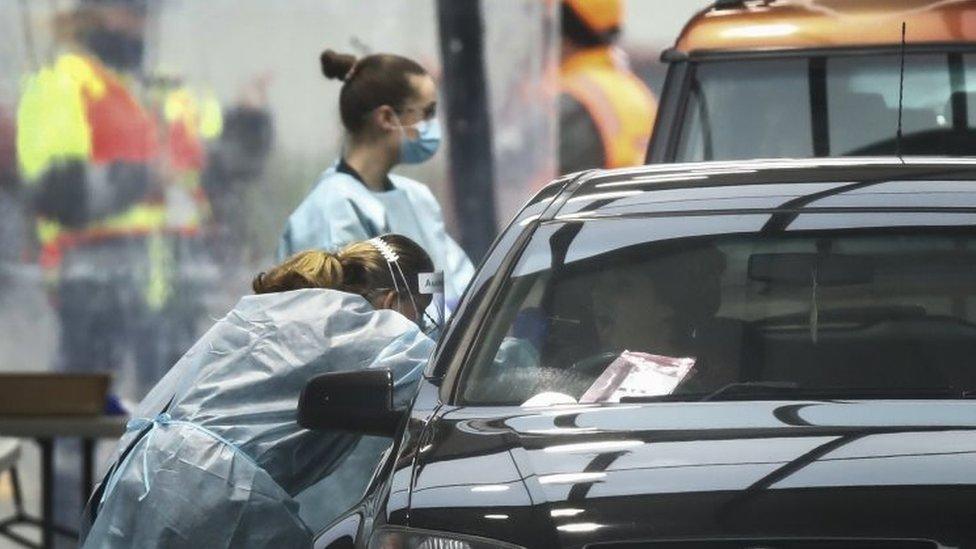Coronavirus in Australia: Melbourne begins new shutdown
- Published
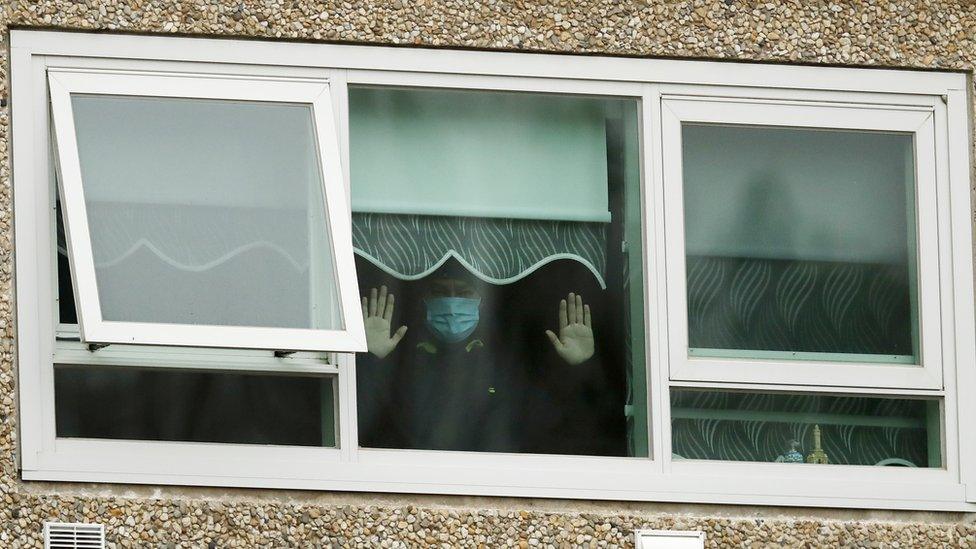
A Melbourne resident confined to his home in a locked-down building
Australia's second-largest city has begun a second lockdown in response to a spike in new coronavirus infections.
Melbourne's five million residents will be barred from leaving home for six weeks, except for essential reasons.
Police say they are setting up a "ring of steel" around the city, with "checkpoints anytime and anywhere" to enforce the measures.
Borders between Victoria, of which Melbourne is the capital, and neighbouring states closed on Tuesday.
Prime Minister Scott Morrison paid tribute to Melburnians' resilience on Wednesday.
"The rest of the country knows that the sacrifice that you're going through right now is not just for you and your own family, but it's for the broader Australian community," he said during a news conference.
Victoria State Premier Daniel Andrews announced the Melbourne lockdown on Tuesday after the state saw 191 new infections, its highest daily number since the pandemic began.

Wednesday's figure was down to 134, but still much higher than numbers in the rest of the country.
"I think people are definitely more scared this time. People are acting more erratic - you can see that on the roads, at the shops," one resident, Gael Baek, told the BBC.
Australia has recorded almost 9,000 cases and 106 deaths from the virus.
On Wednesday, the Melbourne outbreak was linked to three cases in the Australian Capital Territory and one in New South Wales.

A SIMPLE GUIDE: How do I protect myself?
HOPE AND LOSS: Your coronavirus stories
VIDEO: The 20-second hand wash

What are the new restrictions?
People will be kept to their homes and will only be able to leave for essential reasons, such as for work, exercise and shopping for food and other necessities.
Schools will largely return to distance learning and restaurants will, once again, only be permitted to serve takeaway food. However, shops and hairdressers will remain open.
The lockdown covers only Melbourne and an area to the north called the Mitchell Shire. But the state as a whole has been sealed off from neighbouring New South Wales and South Australia.

Police and troops have been stationed at dozens of border crossings and patrol the vast borders with drones and other aircraft.
As of Thursday, they will also be doing random checks on vehicles in and around the city.

Brief taste of normality gone
Ellie Cobb, BBC in Melbourne
As Melbourne heads into its second major lockdown, the vibe is one of resilience tinged with anxiety for what's to come.
Once again, the local streets are empty, and people in socially distant queues outside coffee shops have a look of resignation. Restaurants are back to serving takeaway only.
One question on the lips of many is whether schools will go back after a week-long holiday extension or whether parents are facing another round of home schooling.
With 12 "hotspot" postcodes, mainly in the west and north of the city, already on lockdown for a week, the millions of Melburnians who have woken up to a new round of "stage three" restrictions are wondering why the spread wasn't better contained.
Many are finding it extra tough to have their movements curtailed again after a brief taste of normality, but there's an overarching sense that this is a key moment for the city to turn things around.

How did it come to this?
For months Australia had felt optimistic about containing Covid-19, but then came the resurgence of the virus in Melbourne.
Other Australian states have dramatically slowed or eradicated the virus, but in Victoria private security guards overseeing hotel quarantines reportedly broke the rules.
Mr Andrews described cases of illegal socialising between staff, such as workers sharing a cigarette lighter or car-pooling. Local media also reported claims of sex between guards and quarantined travellers.
On 2 July, a lockdown was placed on about 300,000 residents in "hotspot" suburbs. This has now been extended to the whole city.
On Saturday, the government also controversially locked down nine housing estate tower blocks after a cluster was found there. About 3,000 residents were confined to their homes.
Melbourne tower lockdown 'like being in prison'
Authorities have said they will lift that lockdown - Australia's toughest - once residents have been tested.
What concerns authorities now is that local transmission is the key source of infections. Previously, most cases had come from returning travellers.
How is the rest of Australia reacting?
Other states have shut their borders to Victoria. New South Wales is also considering isolating some of its towns on the border.

"Every resident in NSW should feel on high alert and should be extra careful," said NSW Premier Gladys Berejiklian, citing her state's proximity to Victoria.
"We won't know for a few weeks whether there's been any level of community transmission bubbling away under the surface, as can happen easily, as Melbourne has demonstrated."
NSW has blamed airline Jetstar for allowing passengers on a flight from Melbourne to Sydney disembark on Tuesday without being screened. All of the passengers have since been tracked down.
Mr Morrison has said Australia may place limits on the return of nationals from overseas, as hotel quarantine operations near capacity.
The government has faced calls from the Australian Medical Association and others to recommend people in hotspots wear face masks.

Have you been placed under stay-at-home restrictions in Melbourne? Tell us about your experience by emailing haveyoursay@bbc.co.uk, external.
Please include a contact number if you are willing to speak to a BBC journalist. You can also contact us in the following ways:
WhatsApp: +44 7756 165803, external
Tweet: @BBC_HaveYourSay, external
Send pictures/video to yourpics@bbc.co.uk, external
Please read our terms & conditions and privacy policy
- Published8 July 2020
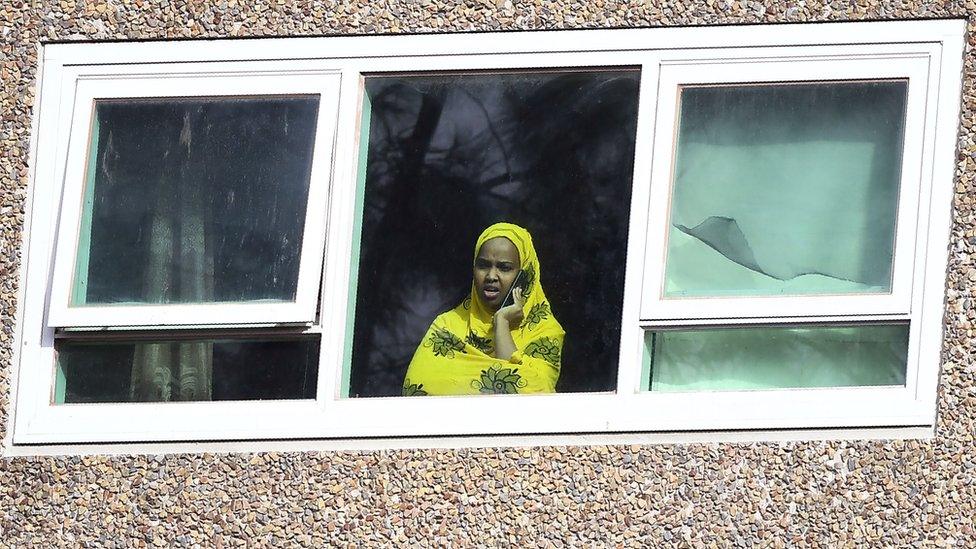
- Published8 July 2020

- Published4 July 2020
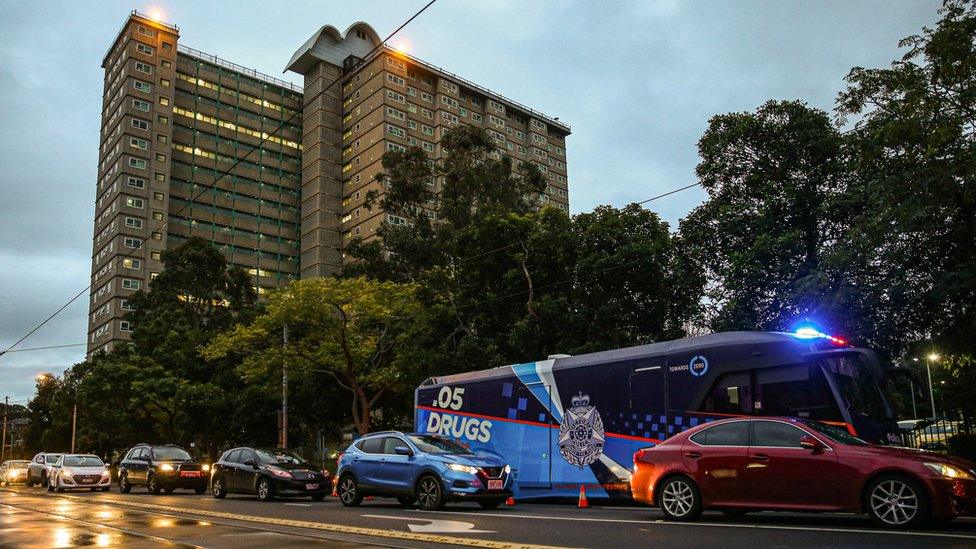
- Published3 July 2020
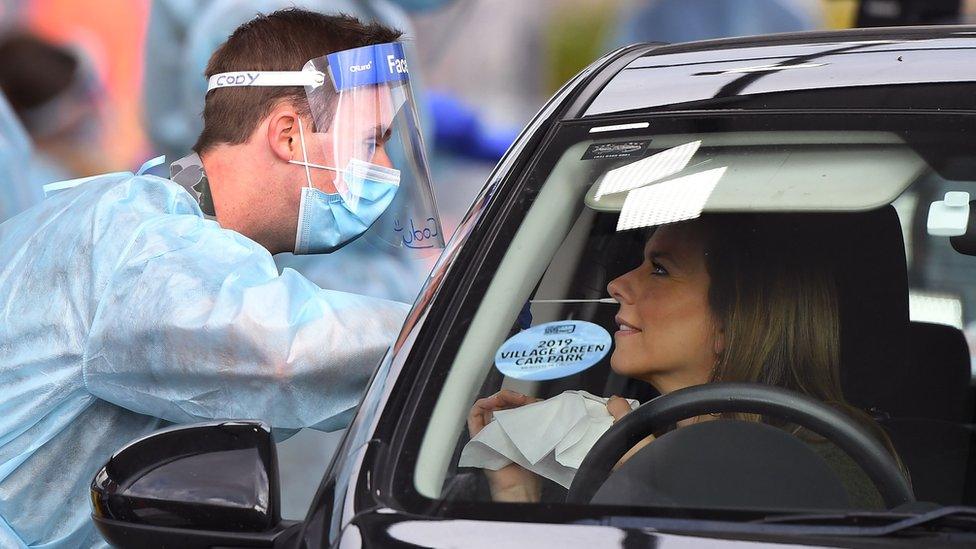
- Published25 June 2020
